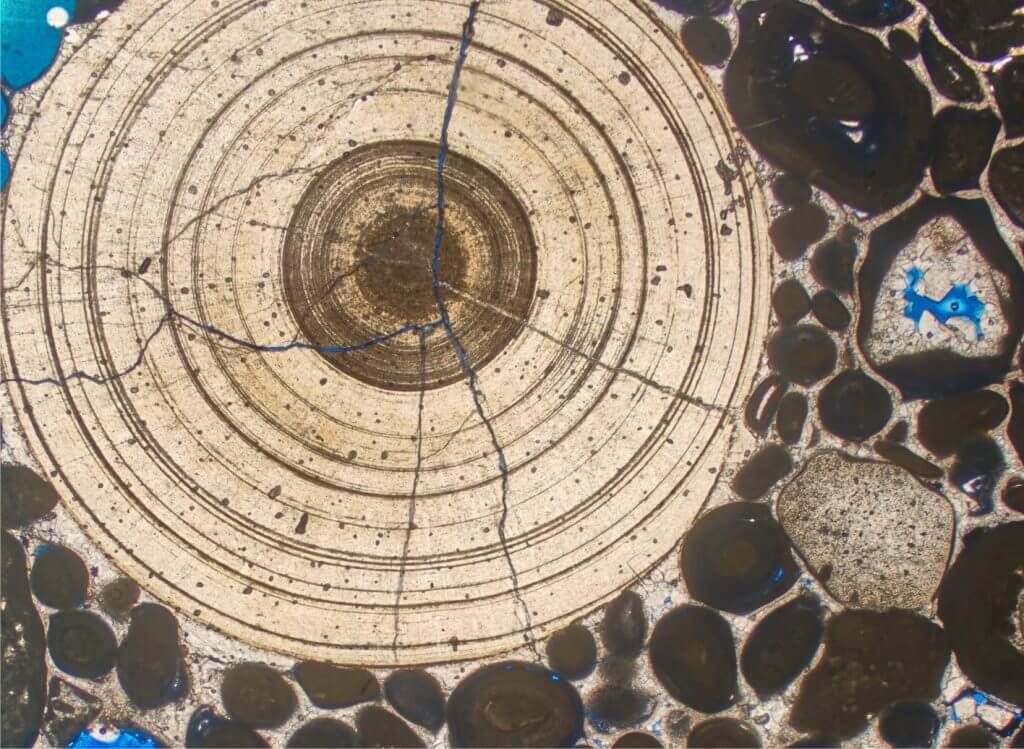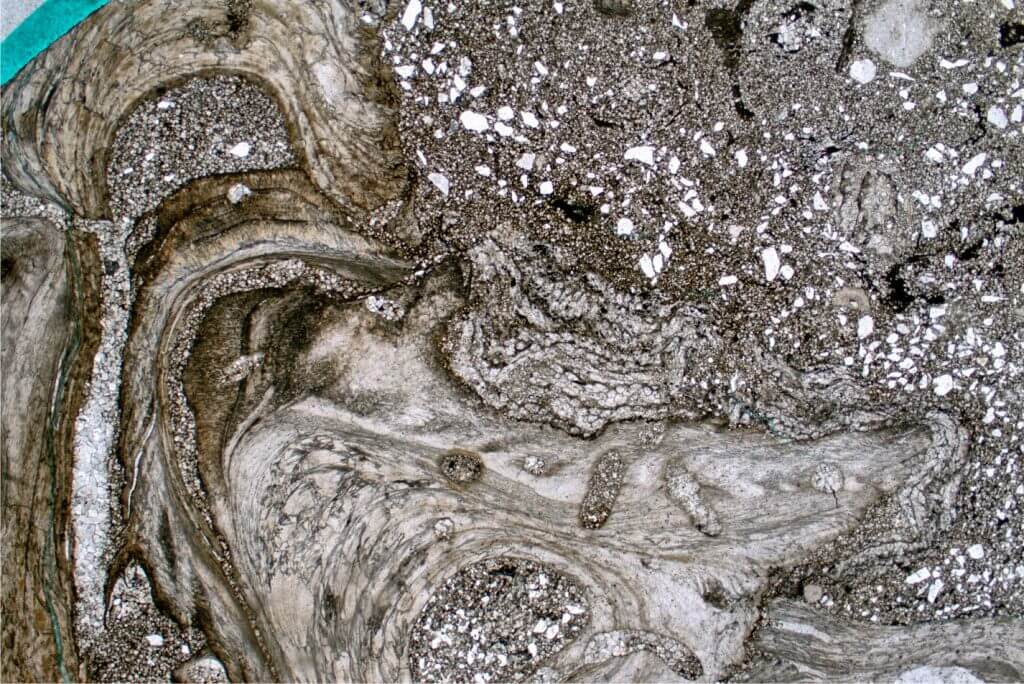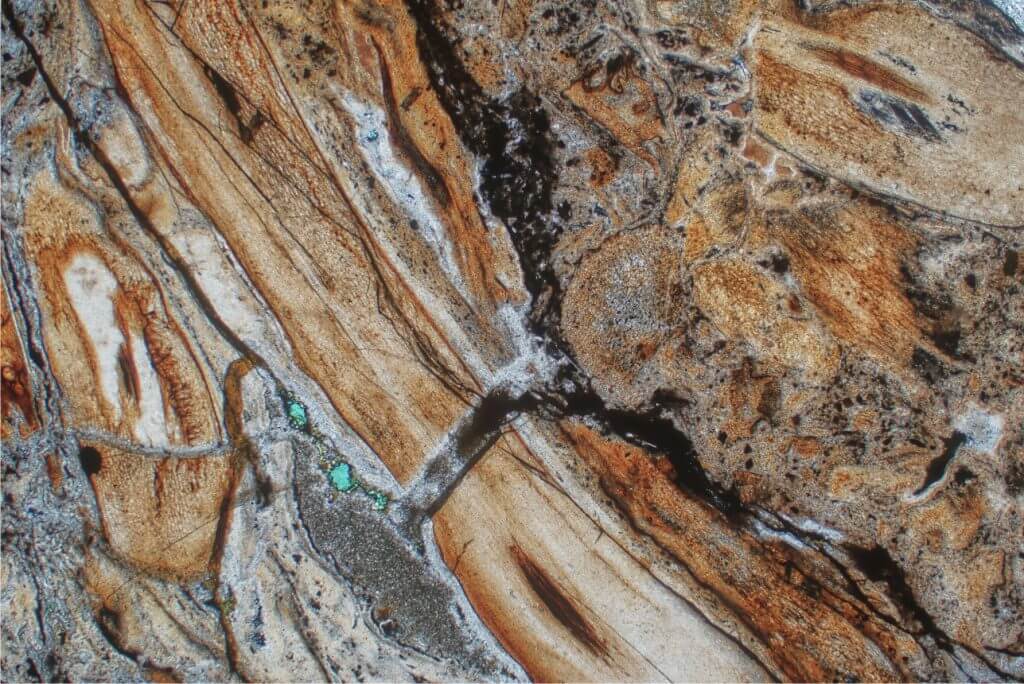Carbonate Petrography - Office-Based Seminar
Carbonate Petrography - Office-Based Seminar
Carbonate petrography training course covering carbonate components, microfacies and palaeoenvironment, carbonate diagenesis and petrographic techniques.
Objectives
The aim of this office-based seminar is to provide a state-of-the-art review of carbonate petrography and petrographic techniques.
On completion of the course participants should be able to:
-
describe and classify carbonates in hand-specimen and thin-section
-
identify skeletal and non-skeletal grains in thin section and make provisional paleoenvironmental interpretations
-
recognise diagenetic components and determine simple cement stratigraphies
-
identify and quantify pore types in thin section
-
classify limestones into statistically valid microfacies groupings
-
critically assess contractors petrographic reports
-
design optimum work programmes for solving depositional and diagenetic problems in carbonate play fairways

This grainstone facies consists largely of dense concentrically-laminated cryptmicrobial nodules ('micro-cyanoids) which typically form in stressed depositional settings. This sample represents deposition on the oceanward flank of a shoal complex located at the outboard margin of a weakly evaporative intra-shelf lagoon. Open marine influence in this facies tract is indicated by the presence of belemnites and echinoid debris. Subsurface sample from the Upper Jurassic of offshore Dubai.
Who Should Attend
Very few geoscientists have a thorough understanding of carbonate petrography and microfacies analysis, yet these techniques are fundamental to re-constructing depositional and diagenetic environments in carbonate settings. This seminar is designed for geoscientists who are involved with carbonate plays but who have little or no specific knowledge of carbonate petrography and microfacies analysis.

A low-diversity fossil assemblage consisting almost entirely of large oyster fragments encrusted by bryozoa. This distinctive biofacies is characteristic, though not diagnostic, of brackish estuarine deposystems. Exclusively open marine components are notably absent. Subsurface sample from the Albian of West Africa.
Course Outline
-
Day 1 - Identification and Paleoenvironmental Significance of Skeletal Grains (Calcareous algae, Molluscs, Brachiopods, Arthropods, Echinoderms)
-
Day 2 - Identification and Paleoenvironmental Significance of Skeletal Grains (Corals, Bryozoa, Sponges, Foraminifera, Calpionellids)
-
Day 3 - Identification and Paleoenvironmental Significance of Non-Skeletal Grains, Micrite, Pore Types, Carbonate Classification Schemes, Petrographic Databasing
-
Day 4 - Petrographic Techniques (Microfacies Analysis, Staining, Cathodoluminescence, Fluorescence, Fluid Inclusion Analysis)
-
Day 5 - Identification of Diagenetic Products and Diagenetic Realms, Dolomites, Paragenetic Sequences

A condensed lag deposit consisting almost entirely of phosphatised bone fragments. Sample from the basal Eocene Dababiya Quarry Member of the Esna Shale, onshore Egypt.
Course Format
Alternate theory and practical sessions, together with powerpoint presentations. Opportunities for hands-on microscopy (bring your own problem slides!), including live demonstration of CL and fluid inclusion analysis.

This sample consists largely of barnacles and (leached) molluscan debris, accompanied by intraclasts. This distinctive biofacies is typical of high-energy rocky shoreline settings. Sub-Recent sample, eastern Arabia.
Course Details
-
Duration: 5 days
-
Proposed dates: to be arranged
-
Cost: By quotation, includes instruction and a comprehensive course manual
-
Venue: Cheltenham / Abu Dhabi / elsewhere by prior arrangement
-
Attendance Limit: minimum 5, maximum 11 participants

